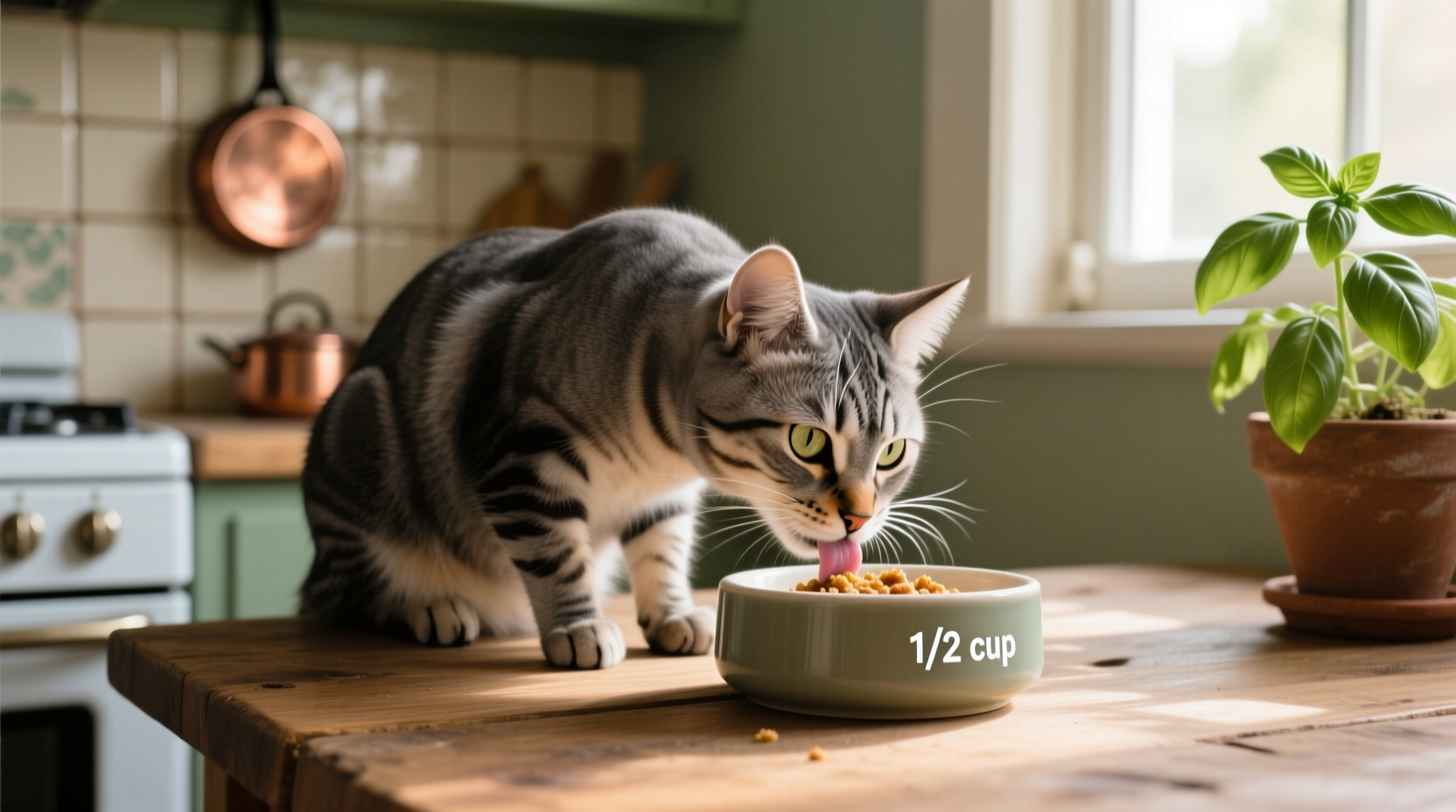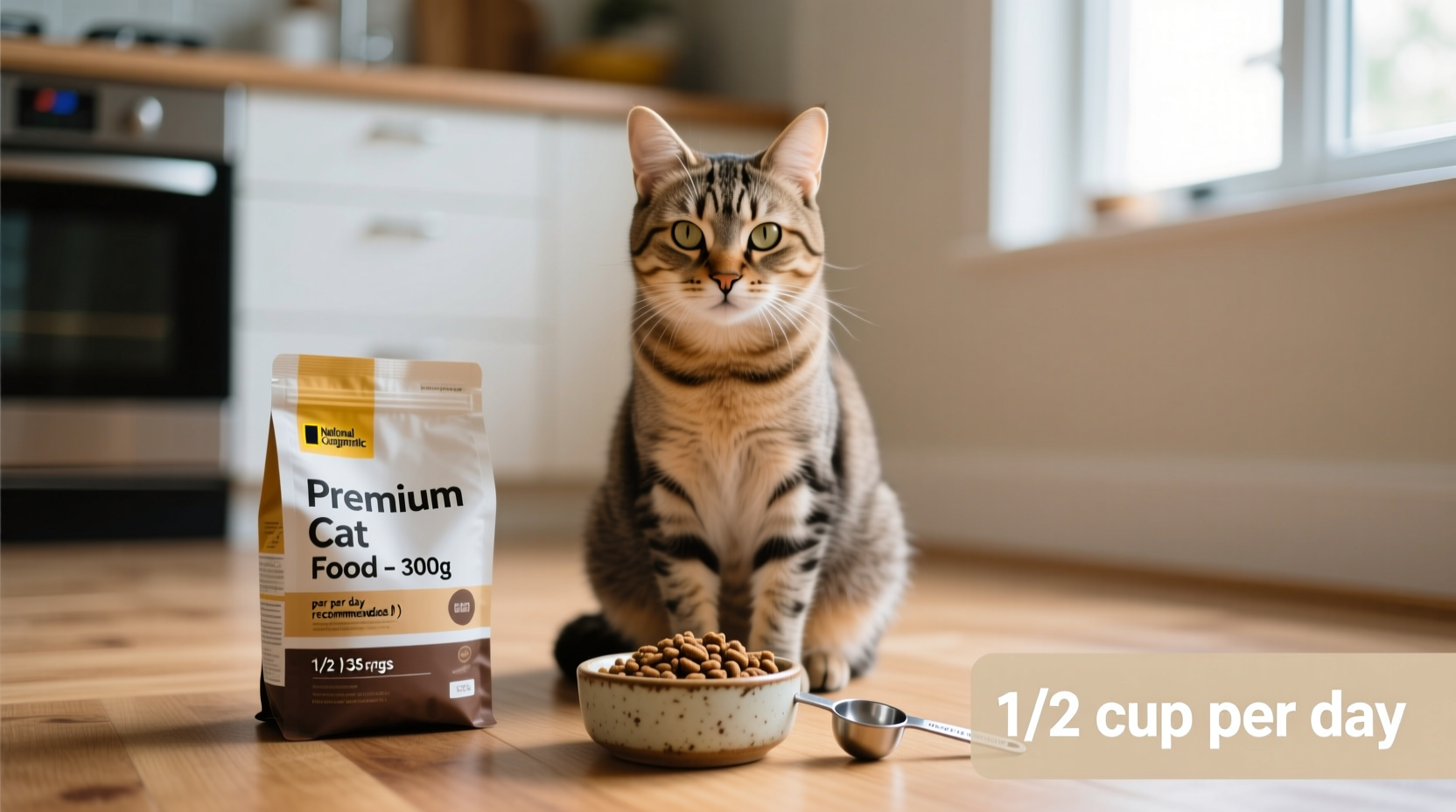Determining how much food to feed a cat properly is one of the most common challenges cat owners face. Getting it wrong can lead to obesity, malnutrition, or serious health complications. This guide provides evidence-based feeding recommendations that consider all critical factors affecting your cat's nutritional needs.
Why Proper Cat Feeding Matters
Over 60% of domestic cats in the United States are overweight or obese, according to the Association for Pet Obesity Prevention. Improper feeding contributes to diabetes, arthritis, and reduced lifespan. Understanding how to calculate cat food portions prevents these issues while ensuring your feline receives optimal nutrition.
Key Factors Influencing Cat Food Portions
There's no universal "correct" amount for all cats. These variables determine your cat's specific needs:
Age and Life Stage Requirements
Kittens, adults, and senior cats have dramatically different nutritional needs:
| Life Stage | Calories per Pound | Feeding Frequency | Special Considerations |
|---|---|---|---|
| Kittens (0-6 months) | 35-45 calories | 3-4 meals daily | Requires higher protein and fat for development |
| Adult (1-7 years) | 20-30 calories | 2 meals daily | Maintenance formula; adjust for activity level |
| Senior (7+ years) | 15-25 calories | 2 smaller meals | May need specialized formulas for health conditions |
Body Condition Assessment
Using weight alone is insufficient. The Purina Body Condition System provides visual guidelines:
- Ideal weight: Ribs easily felt but not visible; visible waistline from above
- Overweight: Ribs hard to feel; no waistline; abdominal fat pad
- Underweight: Ribs prominently visible; spine and hip bones突出
Calculating Exact Food Portions: Step-by-Step
Step 1: Determine Daily Calorie Needs
Use this formula based on body weight:
Resting Energy Requirement (RER) = 70 × (body weight in kg)0.75
Then multiply by activity factor:
- Sedentary indoor cat: RER × 1.2
- Average activity: RER × 1.4
- Active/outdoor cat: RER × 1.6
Step 2: Convert Calories to Food Amount
Check your food's calorie content (usually on the label or manufacturer's website). For example:
- Dry food: Typically 300-500 kcal/cup
- Wet food: Typically 70-100 kcal/3oz can
If your 10-pound (4.5 kg) adult cat needs 220 calories daily and your dry food contains 400 kcal/cup:
220 ÷ 400 = 0.55 cups daily (or approximately 1/2 cup)
Wet Food vs. Dry Food: Portion Differences
Many owners struggle with how to measure cat food portions correctly when switching between wet and dry options. The moisture content creates significant volume differences:

Conversion Guidelines
A 10-pound cat typically needs:
- Dry food: 1/4 to 1/2 cup daily (split into two meals)
- Wet food: 5-7 ounces daily (split into two meals)
When combining both types, reduce dry portions proportionally. For example, if feeding one 3oz wet food meal (approximately 100 calories), reduce dry food by 1/4 cup (approximately 100 calories).
Special Considerations for Accurate Feeding
Evolution of Cat Feeding Recommendations
Understanding how feeding guidelines have changed helps explain current best practices:
- 1980s-1990s: Free-feeding dry food was commonly recommended
- Early 2000s: Research linked free-feeding to obesity epidemic in cats
- 2010s: Precision feeding based on individual metabolism gained prominence
- Today: Personalized nutrition considering microbiome and genetic factors
When Standard Guidelines Don't Apply
These situations require professional veterinary guidance rather than general recommendations:
- Cats with diabetes, kidney disease, or hyperthyroidism
- Pregnant or nursing queens
- Cats recovering from surgery or illness
- Extreme environments (very hot/cold climates)
Avoiding Common Feeding Mistakes
Research from the Cornell Feline Health Center shows these frequent errors:
- Treat overload: Treats should comprise no more than 10% of daily calories
- Ignoring food density: Different brands have vastly different calorie densities
- Using improper measuring tools: Kitchen cups vary significantly; use an 8oz liquid measuring cup
- Not adjusting for seasonal activity changes: Indoor cats may need 15-20% fewer calories in winter
Monitoring and Adjusting Portions
Weigh your cat monthly using a digital scale. The American Animal Hospital Association recommends:
- Adjust portions by 5-10% if weight changes exceed 1% monthly
- Reassess body condition score every 3 months
- Consult your veterinarian before making significant dietary changes
When to Consult Your Veterinarian
Seek professional advice immediately if you notice:
- Unexplained weight loss despite normal eating
- Increased thirst accompanying increased appetite
- Vomiting or diarrhea lasting more than 24 hours
- Difficulty accessing food due to dental pain
Practical Feeding Schedule Template
Create consistency with this approach:
- Morning meal: 1/2 of daily portion at consistent time
- Evening meal: 1/2 of daily portion 12 hours later
- Treats: Maximum 10 small pieces daily, factored into total calories
- Water: Fresh water available at all times (separate from food area)











 浙公网安备
33010002000092号
浙公网安备
33010002000092号 浙B2-20120091-4
浙B2-20120091-4